Oct 25, 2024
What Is Automated Lead Generation?

Automated lead generation is using technology to perform time-consuming sales and marketing lead generation tasks on your behalf. To do this, you have different kinds of automation tools at your disposal. For example, you can use software to automate sending emails or LinkedIn connection requests.
Automated lead generation offers benefits such as:
Reducing human error and thus improving your workflow
Saving time by performing manual tasks and decreasing workload
Providing insights into the performance of lead generation activities so you can use optimization and improve
Consistency in the workflow so you can generate leads daily
Leaving room so you can focus on building relationships and lead nurturing.
That said, there are plenty of automation tools on the market. Let’s first distinguish the types of sales and marketing lead generation activities to discover what tool you should use accordingly.
Exploring the Types of Automated Lead Generation
There are two types of automatic lead generation, but they best work when used in synergy.
Inbound Lead Generation Automation
Inbound lead generation is a marketing strategy for attracting leads to your company. For example, a marketing team can create valuable content to the best leads for your business. The purpose of the content is to compel a lead to take specific actions that will eventually lead to sales.
Since leads nowadays focus on researching independently, inbound lead gen focuses on helping rather than selling. In other words, it shows the way toward your brand content pieces such as:
Blogs
Ebooks
Guides
That said, inbound lead gen automation means streamlining the said tasks using automation tools. For example, you can use the following types of tools to automate your inbound tasks:
Chatbot - to provide answers to questions
Pop-ups & forms - to offer personalized content, lead magnets, or surveys on the website.
Outbound Lead Generation Automation
Outbound lead generation is about finding and reaching out to your ideal leads directly without waiting for them to reach out to you. To clarify, rather than waiting for leads to find your website and reach out like inbound lead gen, you are the one who makes the first move.
That said, to automate your outbound lead generation tasks, you can use the following types of tools:
Email marketing and outreach tools: for outbound marketing and sales to automate sending:
Emails
Newsletters
Themed email sequences
Prospecting tool: for marketing and sales to find outbound leads and contact information
Social media automation tools: for sales to automate outreach on social media
Advertising tools: for marketers to automate buying digital advertising space.
The Differences Between B2B and B2C Lead Generation Automation
Business-to-Business (B2B) lead generation automation uses software to generate potential leads who work in a company to offer them your services. On the other hand, Business-to-Consumer (B2C) lead generation automation uses software to streamline and generate leads who are individual customers. Even though they have different potential customers, both B2B and B2C companies use the same lead generation automation for a similar purpose. Here is how different companies use types of automation tools for their purpose.
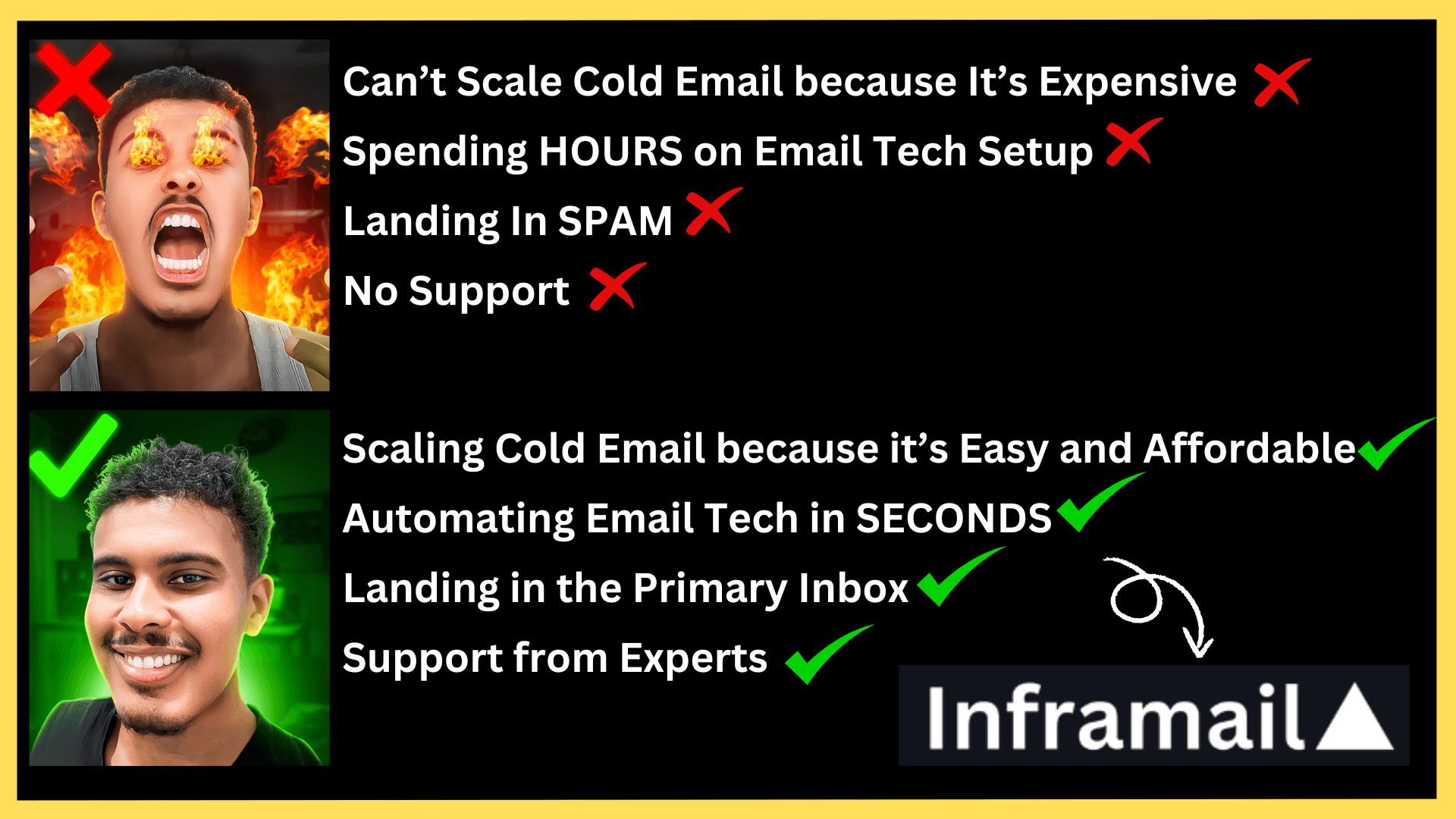
Related Reading
• Email Prospecting
• How to Generate B2B Leads
• How to Warm Up Email Domain
• How Many Emails Can You Send Before Considered Spam
• Best Time to Send Cold Emails
• How to Cold Email
• Best Cold Email Templates B2B
• Email Outreach Best Practices
• Email Outreach Strategy
How To Implement an Automated Lead Generation System

Automated Outbound Lead Generation: Your Playbook for Success
Define Your Ideal Customer Profile and Buyer Persona
Starting your outbound lead generation process without a solid plan is like sailing a ship without a destination. Your lead generation process needs a good basis to get quality leads that convert, and that’s precisely why sales teams start off by creating:
These documents help you generate and guide the best leads through the sales funnel. Not to mention, they also help you with the lead scoring. The best practice for the creation of both of these documents is to analyze your current customer data and gather users who:
Have the shortest buying cycle
Have a high retention rate
Who would advocate for your product or service
Find Your Leads’ Contact Data
Once you establish your ICP and Buyer Persona, it’s time for prospecting. Almost all sales teams use LinkedIn prospecting to find the best leads for their sales funnel. Moreover, many proven LinkedIn lead-generation strategies are available to find quality leads. When gathering the leads’ contact information, it’s best to automate the process and find tools to help you do that.
Craft a Compelling Message
Consider your messaging carefully if you wish to use LinkedIn outreach or any other medium. Cold outreach is hard when you know nothing about the person. That said, it’s important to include research into the lead generation process and figure out what your leads are all about. In other words, comb through their LinkedIn profile and find the About section, posts they published, or what they shared.
This way, you can personalize your communication and be more genuine in showing an interest in solving their problems. Another tip for successful messaging is to mention your unique selling point tailored to their pain. If you need help crafting such a message, you can always use Chat GPT for sales messages.
Send Cold Emails
It’s easy to let the cold email mistakes slither into your outreach. You reduce the chances of some of these mistakes by using automated lead-generation tools to send cold emails.
Remember that 70% of salespeople stop at one cold email. Incorporating follow-up messages into your sequence increases your chances of hearing back by 25%. So be sure to send follow-up emails as well.
Automated LinkedIn Lead Generation
LinkedIn and email outreach have been part of the sales funnels for years. And with hundreds of leads we reach every week via LinkedIn, it’s time-consuming and nearly impossible to get desired results - unless you use different automated lead generation tools. That’s why various LinkedIn automation tools help you streamline different outreach actions on LinkedIn.
For example, our Skylead can automate:
Sending connection requests
Messages
Free and paid InMails
You can also combine these actions and create scenarios based on your leads’ behavior, but we’ll discuss that later.
Lead Automation: Nurture the Leads
Once you start conversing with your leads, keep track of them. This is where CRM, like Hubspot or Pipedrive, comes into play. To clarify, Customer Relationship Management is a software that helps you automate gathering all the information about your sales leads in one place, such as:
Notes about the sales leads
Lead scoring
Information about the company
Deal value
Position in the sales funnel
The next task to perform
Conversation link
This way, you can check where your leads are in the funnel and what level of nurturing they need.
Automated Inbound Lead Generation - Your Playbook for Success
Set Up Your Lead Generation Website
The first step towards automated lead generation is creating a website to connect all your tools. We can write an entire blog on creating a website, but we’ll mention three most essential things:
The good practice here is to create a website that provides the best user experience with a UX/UI design that converts.
Your content marketing team must prepare visuals and texts for the website. The text needs to provide information about your product or service but in a way that describes how it solves the problem and removes your high-quality leads’ pain points.
Creating an SEO plan to rank your website better would be best.
Create a Lead Magnet
The second step is for your content marketing team to create a lead magnet. A lead magnet is a guide, eBook, or mini-course you publish on your website for leads to download. In exchange, you ask your leads to leave their information, such as:
Name
Surname
Email address
This is one of the lead generation strategies, so you can gather the emails and send your leads newsletters. Or you can let your sales team reach out to them. Remember that you cannot ask for leads' emails just for anything. The lead magnet you create needs to offer valuable information and practical knowledge tailored to your leads' needs.
Once you make a lead magnet, you can automate the process by connecting your forms to Hubspot or Monday CRM. This way, you can automatically create a deal. You can push the leads to your campaign if your CRM and outreach tools are connected.
Set Up Your Landing Page
You need a landing page with the best user experience to generate high-quality leads organically or via ads. In other words, it must contain concise information tailored to your high-quality leads. The best practice here is to have dedicated feature pages and what problems they solve. The information you provide needs to have a converting design and info so your visitors wish to take action.
Your landing pages must be as SEO-prepared as possible. Regarding action, your landing page should contain a contact form or any lead magnet I wish to promote to gather quality leads.
Capture Leads With a Chatbot
Another way to generate leads via your website is to use a chatbot. It allows you to turn your website visitors into leads and qualify them for future sales or marketing activities. For example, you can set your chatbot to pose a list of questions before leads can contact the support team.
This is a perfect automation system for lead scoring and qualifying. For example, with some chatbots, you can set up to automatically gather information, such as:
Email addresses
Company sizes
Other information relevant to collecting qualified leads
Once it does, like with lead magnets, I can automate creating a deal in my CRM and pushing the leads to my outreach campaign.
Get Traffic to Your Page
Once you’ve done everything we’ve mentioned above, you need to get leads to your website to generate them. You can get traffic in two ways:
Paid: You can launch paid campaigns via Google ads, Bing ads, or social media such as Facebook or LinkedIn. You can target new leads or retarget your previous visitors.
Organic: Creating blogs or videos that follow SEO standards so they can rank better organically and get you as many visitors as possible.
Lead Management Automation. Nurture the Leads
When you start getting leads to your website, you need to nurture them to some sort of conversion. Therefore, look no further than using pop-up forms or chatbot conversations personalized to their web-behavior.
You can personalize your automated messages and offer relevant content based on, for example, the pages they visit, whether they are returning customers or their exit intent.
Use Marketing Automation for Lead Generation
Once you gather your leads’ emails, you should use marketing automation to outreach them. You can create email campaigns to offer personalized content on a mass scale based on your leads’ behavior. For example, you can send certain messages depending on whether they opened an email. In other words, you can create an entire sequence with different scenarios to offer tailored content that will lead to conversion.
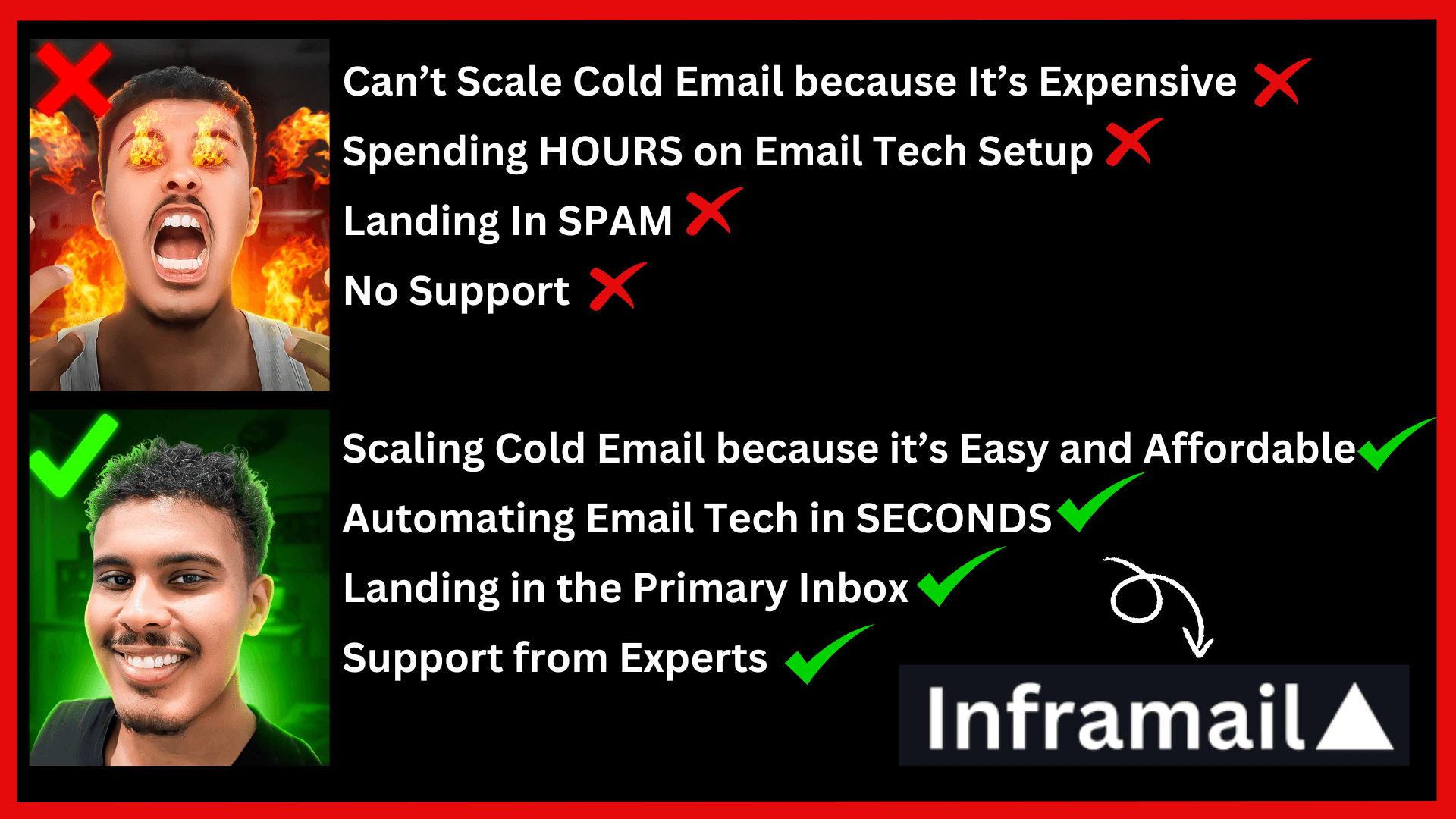
Related Reading
• Best Cold Email Software
• How Long Should a Cold Email Be
• B2B Cold Email Response Rates
• How to Improve Email Deliverability
• Unlimited Email Hosting
• Email Testing Tools
• Best Email Deliverability Tools
• Sales Email Automation Tools
• Email Scraping Tools
• Best Sales Prospecting Tools
• Email Warm Up Tools
• Email Personalization Tools
• Mailscale Alternatives
• Mailforge Alternatives
Can You Use AI to Automate Lead Generation?

The Power of AI in Modern Lead Generation
AI for lead generation isn’t just hype—it’s delivering solid results.
Businesses using AI in lead generation report a 350% ROI along with:
40% increase in lead quality
50% more leads
47% higher conversion rates
How to Use AI for B2B Lead Generation
AI makes lead generation:
Faster
Smarter
More manageable
Instead of wasting hours on research and outreach, you can use AI to:
1. Find Your Audience And Create Icps
Targeting the wrong audience wastes time and money.
AI eliminates guesswork by analyzing data to find patterns in your best customers and identifying similar prospects. Even if you’re starting fresh and don’t have any data, analyzing industry trends and your competitors can still help you find your target audience.
Leveraging AI for Lead Generation
For example, I used ChatGPT’s latest model, o3, to help me identify my target audience for a lead generation campaign. It can also help you create detailed ICPs (Ideal Customer Profiles) and buyer personas. I used the same model to develop ICPs based on the provided data.
That’s not the limit. You can use it to plan lead-generation campaigns.
2. Plan Smarter Campaigns
AI tools can help you find the best strategies and plan lead-generation campaigns from A to Z.
For example, I again used ChatGPT to help me develop a lead-generation strategy. You can use it to plan a campaign based on your strategy step by step and even use AI to assist you at every step.
3. Score And Prioritize Leads
You can even score and prioritize leads using AI if your strategy involves outreach. It saves you hours of manual effort and does it better than a human.
For example, for this article, I used OpenAI’s API to match the prospects and ICPs I have and score my leads, so I only focused on best-match profiles.
4. Generate Content
This use case is well-known and, most widely, used by everyone. You can use AI to generate blog posts, research content, and write ad and email copies.
For example, I used DeepSeek to generate cold email copies and follow-up email copies for the campaign we’re going to launch in this article. You can also use AI to optimize your content’s SEO and translate it to other languages for better local audience penetration.
5. Automate The Entire Lead Generation Process
My favorite use case is automating the entire lead generation process. Using AI, you can eliminate 90% of manual effort from lead generation.
Now, the real question that almost everybody in the B2B lead generation space is asking is, which AI tools are best for lead generation?
Which AI Tool Is Best for Lead Generation?
There are many “AI tools” for lead generation tasks, and the many options have made it challenging to find the ideal tools for certain businesses.
Here’s a breakdown of the top AI lead-generation tools:
1. CIENCE

CIENCE is a sophisticated AI-powered lead generation solution that delivers tailored services for B2B companies through orchestrated outbound campaigns. MemoryAI technology empowers them to leverage real-time buyer insights and multi-channel engagement strategies to connect with key decision-makers at the right moment. The solution transforms high-potential prospects into sales-ready opportunities, accelerating conversions and driving measurable growth.
Top Features:
MemoryAI Intent Tracking: Monitor real-time buyer signals to identify in-market prospects ahead of the competition.
Validated Data Hub: Access a proprietary database of over 255 million verified contacts, including mobile numbers and emails, ensuring high-quality outreach.
Multi-Channel Outreach: Engage prospects across email, phone, direct mail, and social platforms to maximize conversion opportunities.
AI-Driven Campaign Optimization: Automate and refine lead generation strategies with AI to achieve superior ROI.
Real-Time Alerts: Stay ahead with instant notifications when high-intent prospects engage, ensuring timely follow-ups.
Best For:
All business sizes are seeking end-to-end lead generation with AI-powered SDR services.
2. Exceed.ai

Exceed.ai is an AI-powered platform designed to automate and enhance the lead engagement process for sales and marketing teams. It specializes in nurturing leads through personalized interactions across multiple channels, including email and chat.
This platform is ideal for businesses looking to increase efficiency in their sales processes and ensure that no potential customer goes unattended.
Key features:
Automated Lead Qualification
Personalized Communication
Follow-Up Automation
Meeting Scheduling
Best For:
Mid-sized and enterprise-level businesses that need automated lead nurturing and follow-ups.
3. Seamless.AI

Seamless.AI is a sales software that utilizes artificial intelligence to provide users with access to a comprehensive database of contact information for professionals and companies across various industries.
This platform is designed to help sales, marketing, and recruiting professionals efficiently find and connect with potential customers, partners, and candidates.
Key features:
Real-Time Contact Data
AI-Powered Search
Lead Scoring
Market Intelligence
Best For:
Sales teams of all sizes seek to find and connect with contacts quickly through AI-powered search.
4. Instantly.ai

Instantly.ai is a dynamic AI-powered engagement platform that automates interactions with website visitors in real-time through intelligent chatbots. It specializes in qualifying leads, answering inquiries, and guiding users through the sales funnel directly from the website interface.
This tool is particularly beneficial for businesses looking to enhance their customer service and capture more leads without requiring constant human oversight.
Key features:
AI-Powered Chatbots
24/7 Availability
Personalized Interactions
Lead Qualification
Best For:
SMBs and mid-sized companies seeking real-time website engagement and instant lead qualification.
5. Customers.ai

Customers.ai (formerly Mobile Monkey) is a cutting-edge AI tool for lead generation. It offers message automation, data integration, and prospecting capabilities in a single package, enabling businesses to streamline their marketing and sales processes.
AI-Powered Lead Identification: How Customers.ai Optimizes Outbound Marketing
Powered by advanced machine learning algorithms, Customers.ai enhances targeted outbound marketing efforts and assists businesses in communicating with potential leads.
It also analyzes website traffic and looks for customer profiles that match specific characteristics. Once prospective leads are found, they’re added to a contact list for automated email or text message (SMS) outreach.
Boosting Email Engagement with Customers.ai: Copywriting & Deliverability Strategies
You can use Customers.ai’s email copywriting service to generate engaging content that’s likely to have higher open and click-through rates. Customers.ai also supports multiple email senders, which increases message deliverability and reduces the likelihood of your emails being marked as spam.
Data-Driven Outreach: How Customers.ai Optimizes Campaign Performance
Outreach campaign analytics are also available on Customers.ai, allowing you to access real-time data on the performance of various marketing campaigns and make optimizations. With Customers.ai, you can divide your audience into smaller groups based on shared behaviors and characteristics and target them more effectively.
Best For:
SMBs and marketing teams focused on automated personalization across multiple channels.
6. Reply.io

Reply.io is a powerful AI-driven sales engagement platform designed to automate and streamline sales teams’ outreach processes. It enables users to manage multichannel campaigns that encompass email, calls, and social media touches from a single interface.
Reply.io is particularly valuable for sales professionals looking to maximize their outreach efforts. It ensures that no lead is missed and every interaction is optimized for the best possible outcome.
Key features:
Multichannel Campaign Management
Email Automation and Personalization
Sales Task Automation
Email Validation and Verification
Best For:
Small and mid-sized businesses seeking scalable outreach and automated campaigns.
7. Clari

Clari is an AI-powered revenue operations platform that uses automation and transparency to transform how forecasting, pipeline management, and sales execution are approached.
It gives sales teams critical insights into their pipeline and helps them focus on the most impactful activities.
Key features:
Real-Time Pipeline Visibility
Predictive Analytics
Automated Forecasting
Revenue Intelligence
Best for:
Midsize to enterprise businesses seeking to optimize revenue operations, forecasting, and pipeline management with AI-powered insights.
8. Conversica

Conversica is an AI-powered virtual assistant platform that automates customer engagement across email, SMS, and other channels. It helps businesses nurture leads, re-engage customers, and schedule meetings by mimicking human conversations, enabling sales teams to focus on high-value prospects.
Key Features:
AI-powered virtual assistants
Multi-channel lead engagement
Automated lead nurturing
Performance analytics
9. LeadIQ

LeadIQ focuses on AI-enhanced prospecting and data enrichment, enabling teams to streamline outreach and improve lead quality. It automates collecting contact information from LinkedIn and other sources, streamlining outreach with CRM integration and helping sales teams engage prospects faster with personalized messages.
Key Features:
AI-enhanced prospecting
Contact data enrichment
CRM integration
Email automation
Best For:
Sales teams need AI-powered prospecting and CRM integration.
10. Outreach.io

Outreach.io provides AI-powered sales engagement tools, helping teams automate and optimize outreach across multiple channels. Advanced analytics, automated workflows, and pipeline management features enable sales teams to boost efficiency, track performance, and close deals faster.
Key Features:
Multi-channel automation
AI-powered email sequences
Pipeline analytics
Performance tracking
Best For:
Sales teams looking for advanced automation and pipeline management.
11. Albert

Albert by Zoomd is a cloud-based AI platform for data-driven lead scoring. It's compatible with existing business systems, making it easier for marketing teams to find qualified leads. Albert supports lead generation on multiple channels, including YouTube, Instagram, and Facebook.
Rather than just making recommendations, Albert can perform different marketing tasks autonomously, freeing human agents to focus on other core processes. It also facilitates cost savings by allowing businesses to spend only on channels with high engagement rates.
Leveraging Predictive Analytics in Albert for Smarter Marketing Decisions
Albert uses machine learning models to analyze historical and current customer data. This allows businesses to gain crucial insight for optimizing marketing campaigns. With integrated predictive analytics, Albert assists you in determining the best time to send emails to boost open and click-through rates.
You can also use predictive analytics to identify customer segments likely to be profitable and forecast your sales and revenues.
Optimizing Lead Generation with Albert’s AI-Powered Insights and CRM Integrations
Albert provides real-time data on the performance of different campaigns. As a result, you can optimize lead generation strategies to achieve higher conversion rates. Albert’s AI algorithm enables it to identify intent and lead behaviors and tailor its marketing approaches for better results.
Plus, Albert is compatible with CRMs (customer relationship management software) like HubSpot, Pipedrive, and Zoho and marketing platforms like:
Facebook (Meta) Ads
X Ads
Google Ads
12. CoPilot AI

CoPilot AI focuses on content optimization and leads outreach on LinkedIn. It helps businesses create engaging content likely to appeal to and attract potential customers. CoPilot AI features personalized AI insights, which allow organizations to customize content for better search engine visibility.
It also supports video prospecting, enabling teams to generate and deliver AI-powered video messages in bulk.
Enhancing Lead Engagement with CoPilot AI’s Smart Inbox and Sentiment Analysis
CoPilot AI has a smart reply and smart inbox features that you can use to boost engagement by sending auto-generated messages. CoPilot AI uses sentiment analysis to identify high-intent targeted leads. It can analyze potential customer messages and predict whether they will likely convert.
CoPilot AI can be incorporated into content creation workflows to generate content ideas and social media posts and translate messages to different languages.
13. useArtemis

UseArtemis, which is a lead generation and nurturing tool that assists businesses in searching and reaching out to potential customers. useArtemis helps increase conversion rates by ensuring that marketing teams target qualifying leads and use personalized messaging.
With detailed reporting and analytics, organizations can track the performance of their marketing campaigns and make any adjustments needed.
Leveraging useArtemis for LinkedIn Lead Generation and Email Outreach
You can also use useArtemis to scrape data like professional emails and other contact information from LinkedIn and use it to find leads. Sales teams can engage in lead nurturing by generating and sending tailored messages to prospective clients on LinkedIn or via email.
Scaling Multi-Channel Outreach with useArtemis: Automation, Collaboration & CRM Integrations
useArtemis makes it easier to run multi-channel campaigns. You can create multiple accounts and set custom sequences and conditions to manage user interactions. You can also download and add the useArtemis email finder extension to your browser to export contact information in CSV or Microsoft Excel file formats.
useAtemis supports collaboration, allowing remote teams to work together to generate leads. It’s compatible with market automation platforms and CRM systems like:
Marketo Engage
Salesforce
Zoho

15 Best Lead Generation Automation Tools
1. Inframail: The Email Infrastructure Specialists
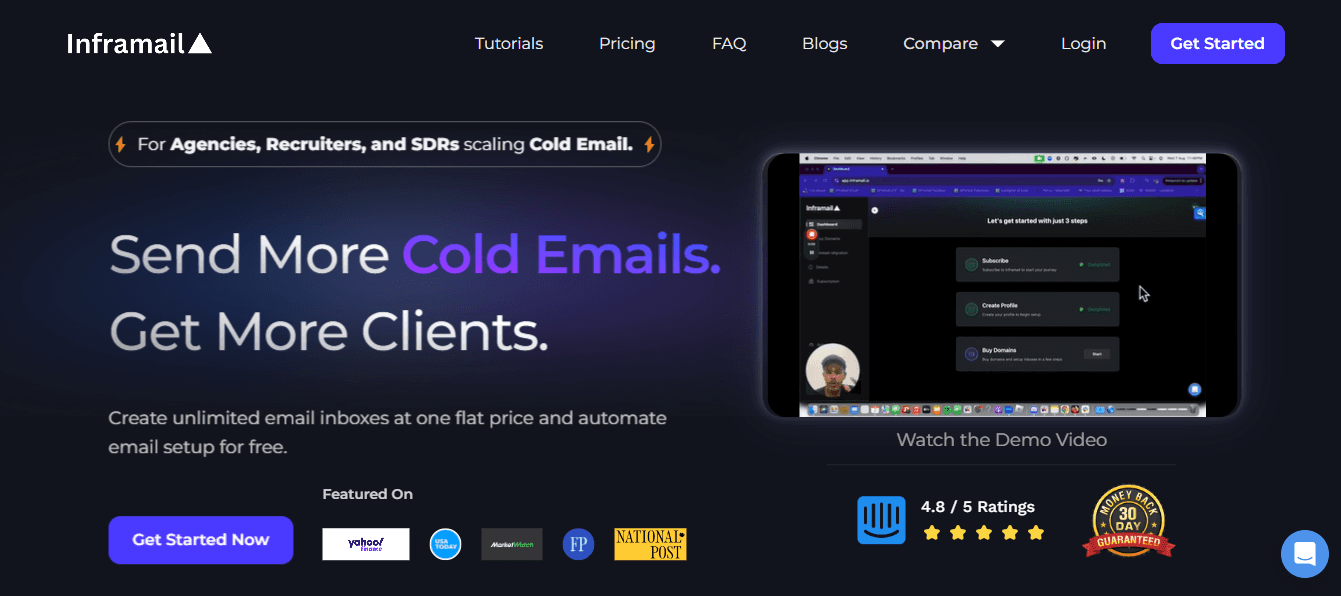
At Inframail, we are revolutionizing cold email infrastructure with unlimited inboxes at a flat rate.
We provide:
Microsoft-backed deliverability
Dedicated IP addresses
Automated technical setup
This helps customer outreach efforts efficiently like:
Agencies
Recruiters
SDRs
The main benefits of using our service:
Automated SPF, DKIM, and DMARC setup
Dedicated email servers for each user
16-hour priority support daily
Unlike traditional providers that charge per inbox and leave you wrestling with technical configurations, Inframail streamlines the entire process. We handle the complex infrastructure setup while you focus on reaching more prospects.
InfraMail provides the robust email infrastructure you need without the usual technical headaches and per-inbox costs, whether you're:
An agency looking to scale outreach
A recruiter connecting with candidates
An SDR driving sales
Start buying domains now and set up your email infrastructure today with our email infrastructure tool.
Inframail is designed to work seamlessly with popular cold email tools, allowing you to export your inboxes and get started with your campaigns right away, like:
Instantly.ai
Smartlead.ai
Cost-Effective Email Management and How Inframail Outperforms Google Workspace
With Inframail, you can create unlimited email inboxes at a flat rate, avoiding the high costs of platforms like Google Workspace. It also automates the setup of vital email records, saving you time and hassle, like:
SPF
DKIM
DMARC
Let’s put this into perspective with a quick example. Say you’re using Google Workspace, where each email inbox costs around $6 monthly. If you need 50 inboxes, that’s $300 a month. With Inframail’s flat rate of $99, you save $201 monthly. Over a year, that saves $2,412—pretty significant, right?
2. Wisepops - The Website Lead Generation Tool
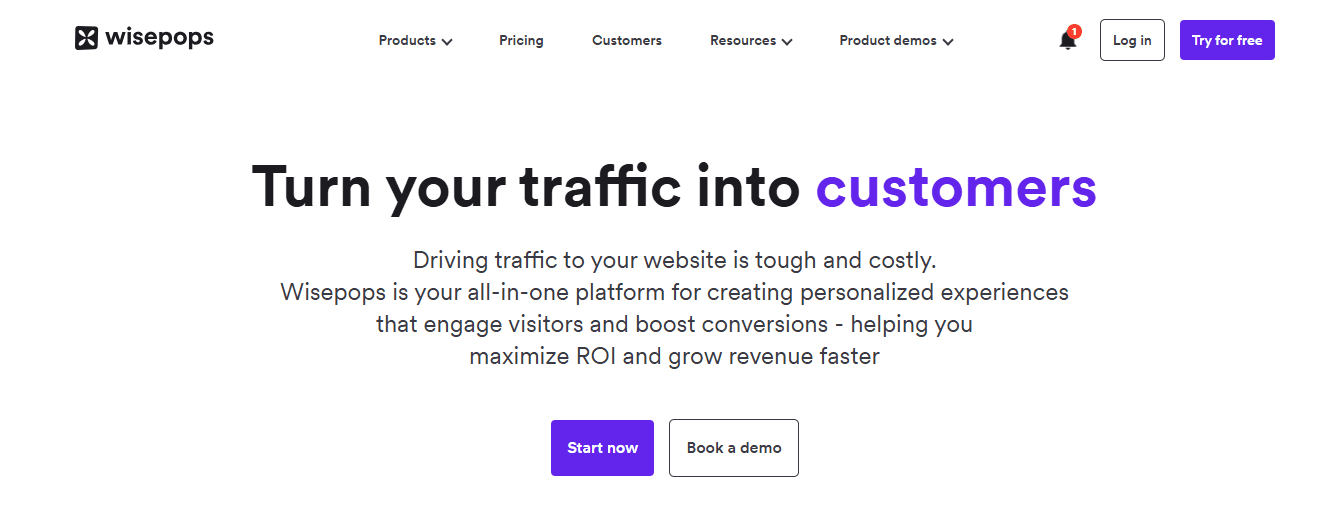
Wisepops is one of the best options for automating lead-generation campaigns on your website. It's an onsite marketing platform that lets you create campaigns such as:
Sale promotions
Personalized offers
Product recommendations and more using:
Popups
Sticky bars
Embedded signup forms
Onsite notifications
Connect your email app or other software to automate this process. You can share:
Offers and incentives
Build your email list
Target visitors based on their:
Location
Behavior
Referral source
A great thing about Wisepops is that you can set up custom campaign display rules and triggers to maximize the CTR. This makes it a great automated lead-gen app for those who'd like to do a lot of experiments.
Key features:
Any popups and forms for lead gen
Onsite notifications
AI Wishlist
Embedded email signup forms
Built-in Shopify properties
Goal and revenue tracking
A library of 100+ campaign templates optimized for conversions
Deep A/B testing (test 5+ campaign variants)
Powerful analytics for tracking the performance of your lead generation campaigns
Customizable popup behavior and user segmentation options
Integrations with popular apps (see all integrations)
Pros:
Integrates with all popular CRMs and tools
Perfect for Shopify and Klaviyo users
Easy to use and customize campaigns
Advanced visitor targeting options
Variety of onsite channels for any marketing experiment
Cons:
No free plan (but there is a 14-day trial with no credit card required)
Pricing:
Free trial for 14 days.
Paid plans with unlimited campaigns start at $49/month.
3. Unbounce: The Landing Page Tool for Automated Lead Generation
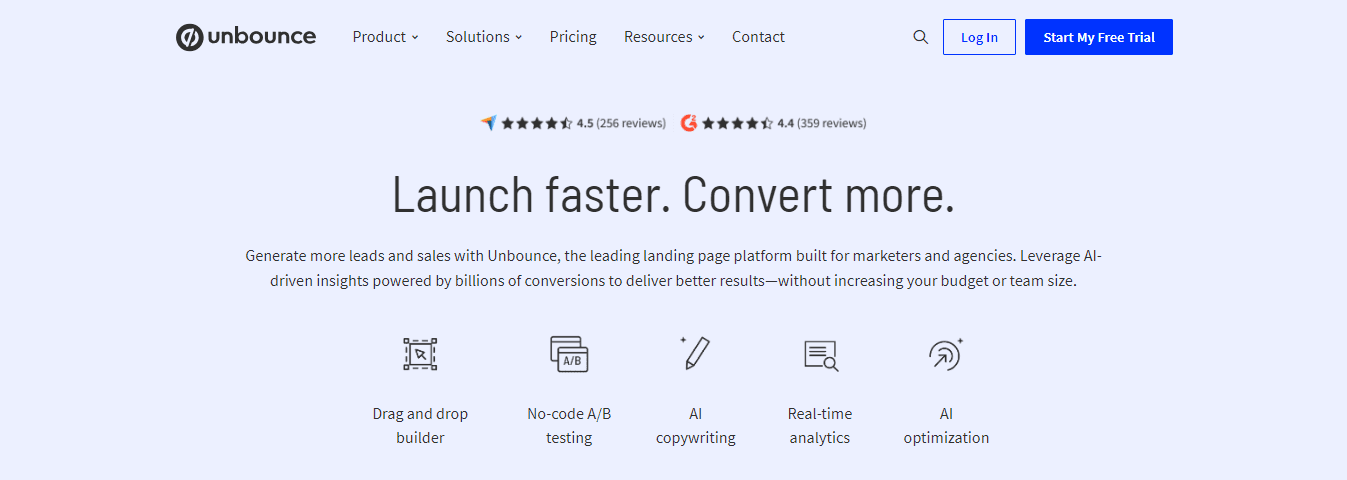
Unbounce allows you to create and test landing pages without any coding experience. It provides a variety of templates optimized for conversions and offers features useful for lead generation. With Unbounce, you can create custom landing pages for different marketing campaigns, such as PPC ads or social media campaigns. This platform connects with solutions such as HubSpot or Marketo to build advanced automation flows for lead generation and lead scoring.
Key features:
Visual drag-and-drop landing page creator
A/B testing and conversion-focused templates
Dynamic text replacement for ecommerce personalization
Lead capture forms
Unbounce is ideal for businesses of all sizes looking to create landing pages that convert visitors into leads. Its A/B testing and analytics features allow you to optimize your landing pages for maximum conversions.
Pros:
Easy to use and no coding required
Flexible integration with various marketing platforms
Cons:
Limited features compared to other marketing automation platforms
Pricing:
A free trial is available
With monthly billing, unlimited landing pages, popups, and sticky bars start at $99/month.
4. OptinMonster, The Email List Growth Tool
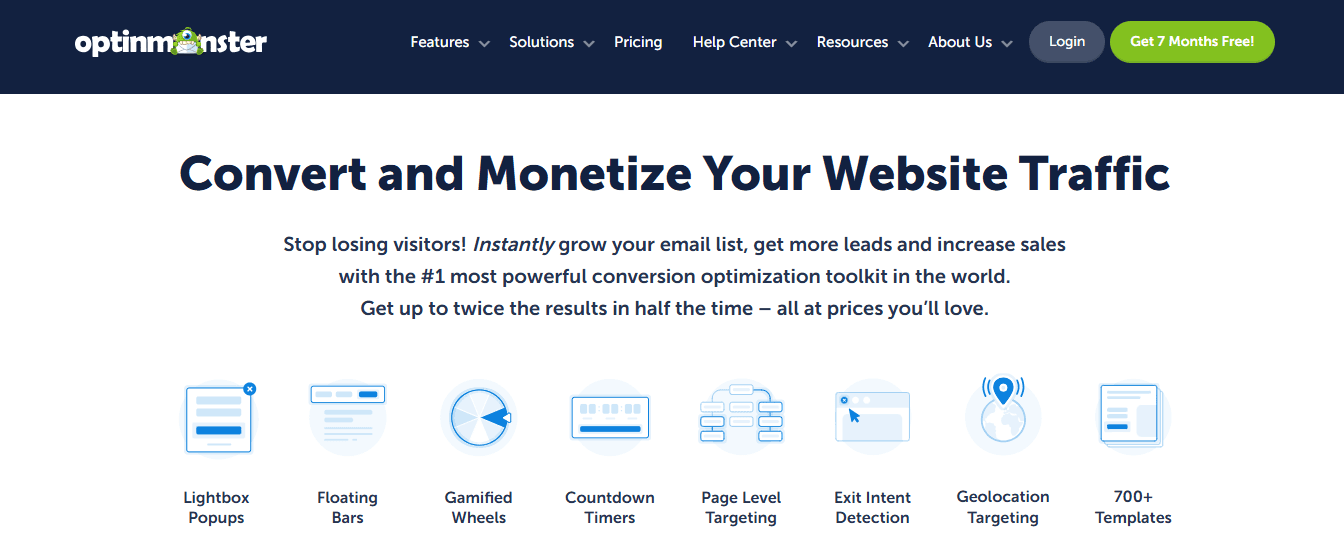
OptinMonster is a lead generation automation tool that helps businesses create high-converting email popups, slide-ins, and other signup forms. It allows you to create targeted campaigns, segment your audience, and track your results in real time. OptinMonster offers various pre-built templates and design options that are fully customizable to suit your brand.
Key features:
Easy to use WYSIWYG form builder
Exit-intent detection to target visitors who are about to leave your site
Behavioral triggers for personalized targeting
Customizable templates and designs Integration with various email marketing tools
OptinMonster is best for businesses that want to grow their email list and increase conversions. It benefits those who want to retarget and re-engage users about to leave their website.
Pros:
Powerful targeting and segmentation options
Excellent analytics and A/B testing features
Flexible integration with multiple marketing platforms
Cons:
Can be pricey for smaller businesses (that's why there are many OptinMonster alternatives)
Pricing:
OptinMonster comes with a free 14-day money-back guarantee starter option.
Paid plans start at $9/month.
5. Hubspot, The Complete Marketing Automation Solution

HubSpot is an all-in-one marketing automation platform that includes a variety of tools for:
Lead generation
Customer relationship management
Sales
It allows businesses to create targeted campaigns, manage leads, and automate various marketing processes, including lead generation. HubSpot offers a comprehensive suite of tools to help businesses of all sizes grow their customer base.
Key features:
Email marketing and automation tools
Landing page builder
Marketing analytics and A/B testing
Sales automation tools
HubSpot is best for businesses that want a complete marketing automation solution. Its freemium plan is perfect for new websites with low traffic.
Pros:
Comprehensive marketing automation solution
Flexible integration with various marketing tools
Excellent analytics and A/B testing features
Cons:
The steep learning curve for beginners
The popups are very bland and generic
Some plans are quite pricey
Pricing:
HubSpot offers a free plan with limited features (e.g., 2000 marketing emails per month and fewer interactions).
Omni-channel marketing automation is available in the Marketing Hub Professional plan, starting at about $740/mo.
6. Marketo, The Lead Management Powerhouse

Marketo is a cloud-based marketing automation platform that provides lead generation, lead management, email marketing, and analytics tools. It can track customer behavior across various channels, including:
Email
Social media
The web
Marketo's lead management capabilities allow businesses to:
Capture and qualify leads
Track their behavior
Assign scores based on their level of engagement
Key features:
Email marketing and automation tools
Landing page builder
Analytics and A/B testing
CRM integration
Marketo was acquired by Adobe in 2018 for $4.75 billion. It became part of Adobe Experience Cloud, a suite of solutions that helps businesses manage their digital experiences across multiple channels. By integrating Marketo's marketing automation capabilities with Adobe's content creation, data, and analytics tools, Adobe aimed to provide a more complete solution for marketers. It suits B2B companies looking to manage complex sales cycles and multi-touch campaigns.
Pros:
Powerful lead management and scoring features
Advanced personalization and targeting options
Flexible integrations with various marketing and sales tools
Cons:
Higher price point than other marketing automation platforms
Pricing:
Marketo's pricing is based on the number of contacts and features required. Contact Marketo for a quote.
7. Klaviyo: The E-Commerce Email Marketing Specialist
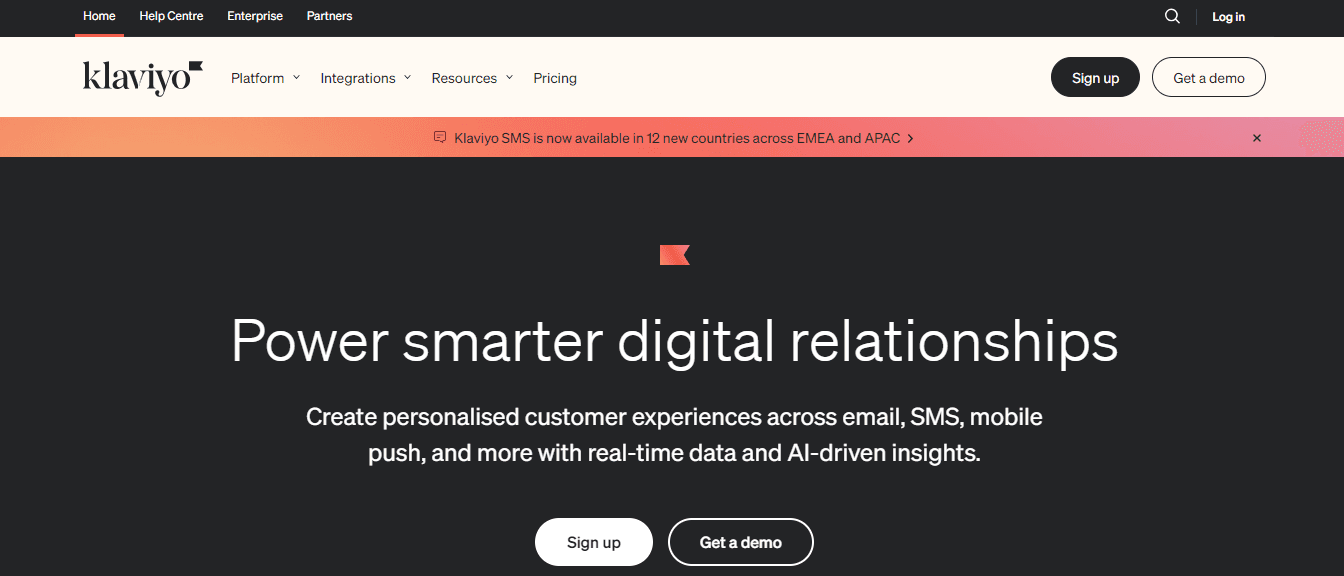
Klaviyo specializes in email and SMS marketing. It provides tools for:
Segmentation
Lead generation automation
Analytics
Klaviyo's email marketing capabilities include:
Customizable templates
A/B testing
Automated flows
These email automation series are great for ecommerce, especially if you want to reduce cart abandonment. With Klaviyo, businesses can also track revenue and ROI for each campaign, making it easier to measure the success of their marketing efforts.
Key features:
Segmentation and personalization
Ecommerce integrations
Analytics and A/B testing
Klaviyo is best for ecommerce businesses looking to automate their email and SMS lead nurturing processes and increase revenue. Its ecommerce integrations allow companies to track customer behavior, such as purchases and product views, and use that data to create targeted campaigns.
Pros:
Easy to use and navigate
Powerful ecommerce integrations and revenue tracking
Flexible automation and personalization options
Cons:
Limited integrations with non-e-commerce tools
Pricing:
You can use Klaviyo to email up to 500 contacts for free.
Klaviyo's pricing is based on the number of contacts and features you need.
Paid plans start at $45/month for core email functionalities.
8. Mailchimp, The Budget-Friendly Marketing Tool for Small Businesses

Mailchimp is an all-in-one marketing platform that offers a variety of tools for generating leads and managing email marketing campaigns. Its user-friendly interface lets users create automated lead generation flows and track their performance. It also provides features such as:
Landing pages
Social media advertising
Email marketing automation workflows
Key features:
Email marketing and lead automation tools
Landing page builder
Social media advertising features
Marketing automation workflows
Analytics and A/B testing
Multiple integrations
Mailchimp is known for its affordability and ease of use, making it a popular choice for SMBs. Its drag-and-drop interface allows you to set up custom campaigns without technical expertise.
Pros:
Variety of integrations with other marketing and lead-generation tools
Affordable pricing options for businesses of all sizes
Lots of official resources and tutorials
Cons:
Mailchimp’s out-of-the-box popup signup forms are rather basic.
Pricing:
Mailchimp offers a free plan for up to 1,000 emails with limited features.
Paid plans start at $13/month, and price increases based on the number of contacts.
9. ActiveCampaign, The Email Automation Expert
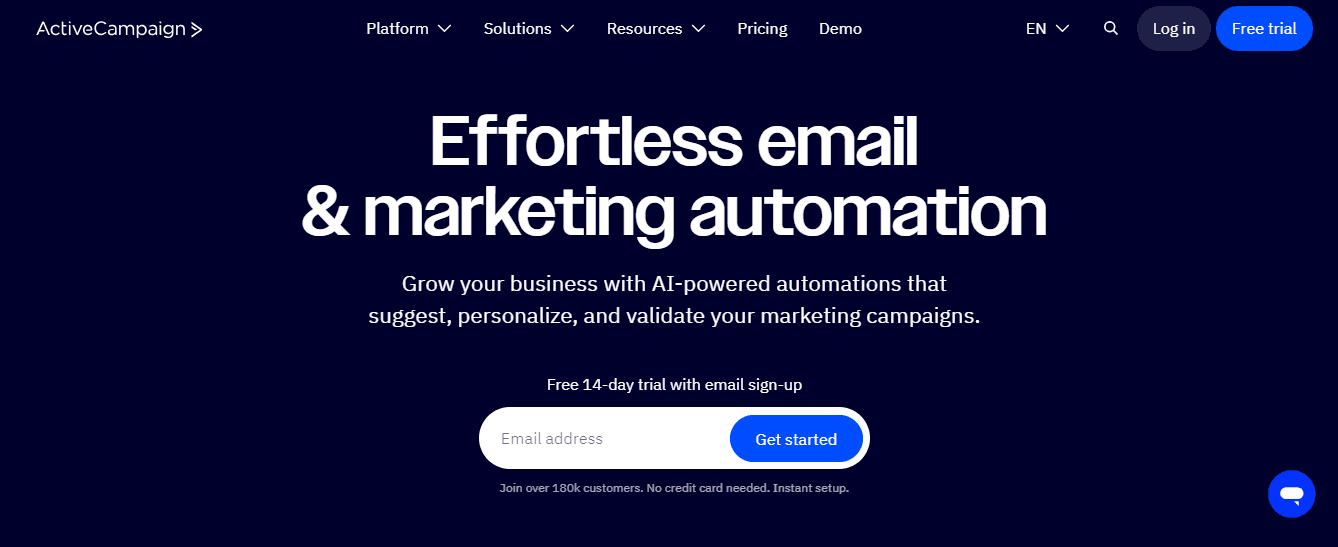
Like Mailchimp, ActiveCampaign is a marketing automation platform that offers various tools for online businesses to manage their automation workflows and customer engagement. It is primarily designed to help companies create personalized customer experiences through targeted email campaigns and SMS messaging. It lets you create forms and build automated lead generation and lead nurturing workflows.
Key features:
Dynamic content based on individual lead data
Automated email series with many sequence templates
Lead scoring based on engagement
Automation workflows allow you to create customized sequences of emails, SMS messages, and other marketing activities triggered by specific user behavior. It is an excellent platform for businesses looking to generate leads automatically and optimize their sales funnels.
Pros:
Powerful flow automation capabilities
Customizable campaigns with dynamic content
Cons:
The UI is less friendly, and some users may find the tool slightly overwhelming.
Pricing:
You can try ActiveCampaign for free for 14 days.
Paid plans start at $29/month.
10. Sprout Social, The Social Media Lead Generation Tool
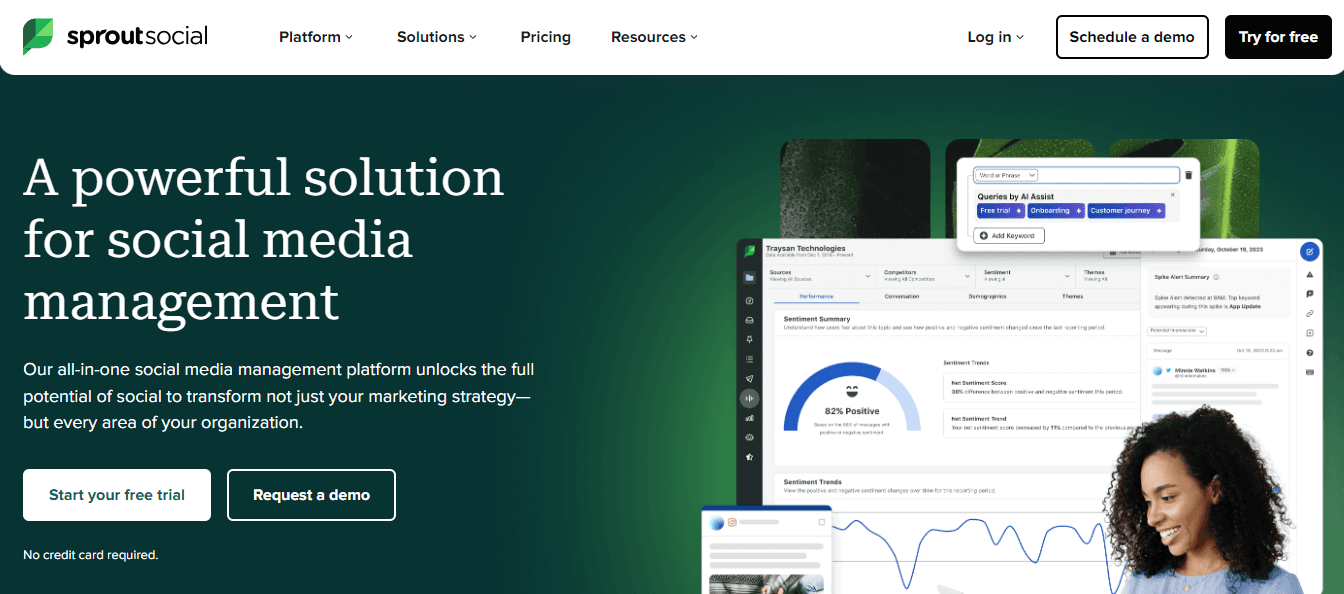
Sprout Social is a social media management platform. It provides tools for:
Scheduling
Publishing
Analyzing social media content
Social Sprout's social listening features let you track relevant mentions and automate your responses. The platform also allows you to build lead-generation bots for social media.
Key features:
Social listening and engagement
Analytics and Reporting
Sprout Social is best for businesses that manage multiple social media accounts and monitor their brand reputation online. Its social listening features make it a valuable platform for automating lead generation and customer engagement.
Pros:
Powerful social listening and engagement features
Robust analytics and reporting tools
Easy-to-use interface
Cons:
Limited integrations with non-social media tools
Pricing:
You can try Sprout Social for free with a 30-day trial. The Standard plan with tasking and social CRM tools starts from $249 per month.
11. Leadfeeder, The Website Visitor Tracking Tool
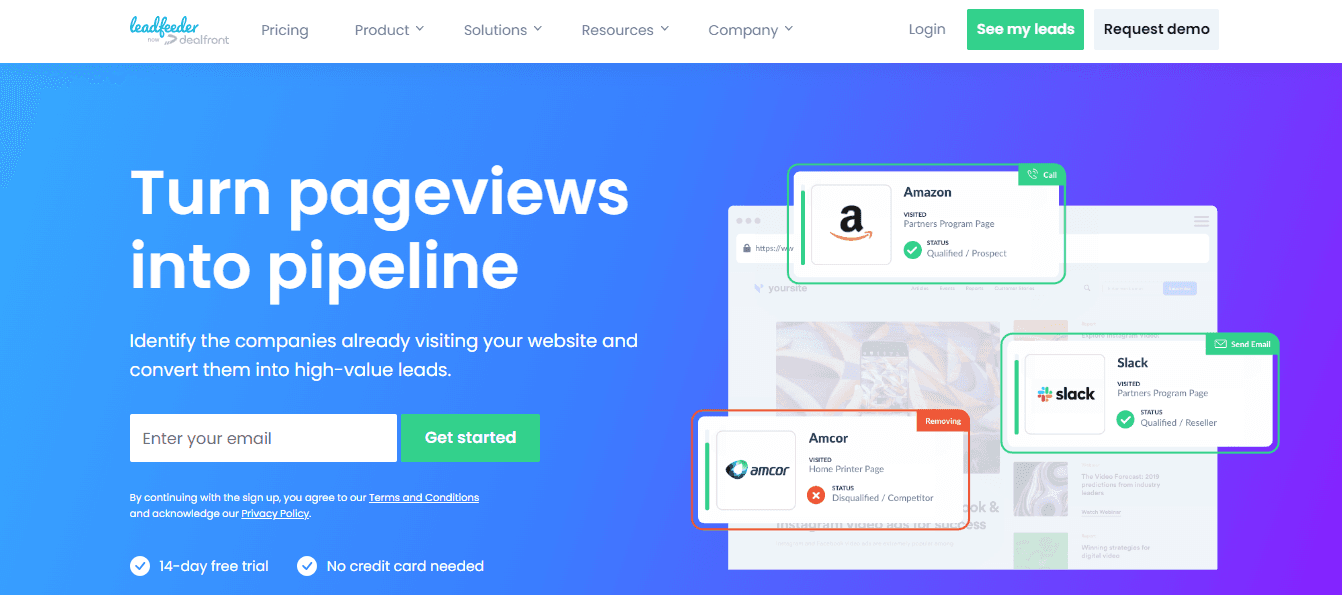
Leadfeeder is a lead generation tool that uses website visitor data to identify potential customers. It also integrates with popular social media platforms like LinkedIn to help you find leads and engage with them. With Leadfeeder's lead scoring and qualification features, you can focus on the most promising user segments.
Key features:
Identify the names of the companies visiting your website
Reveal the exact behavior of users
Unique database of static and dynamic IPs
Lead scoring and qualification
Integration with CRM and marketing automation tools
Real-time alerts and notifications
Leadfeeder is best for B2B lead generation. It can turn anonymous website visitors into actionable sales leads. It works better if your operations are focused on an account-based approach.
Pros:
You can easily filter and hide unwanted companies or bots
Insights based on the exact behavior of the companies visiting your website
Cons:
There is only one paid plan, and the tool is somewhat expensive.
Pricing:
Using fresh data with the lite plan, you can identify up to 100 companies for free.
For $139 a month, you unlock unlimited data storage and remove the cap on identified companies.
12. Drift: The Conversational Marketing Tool
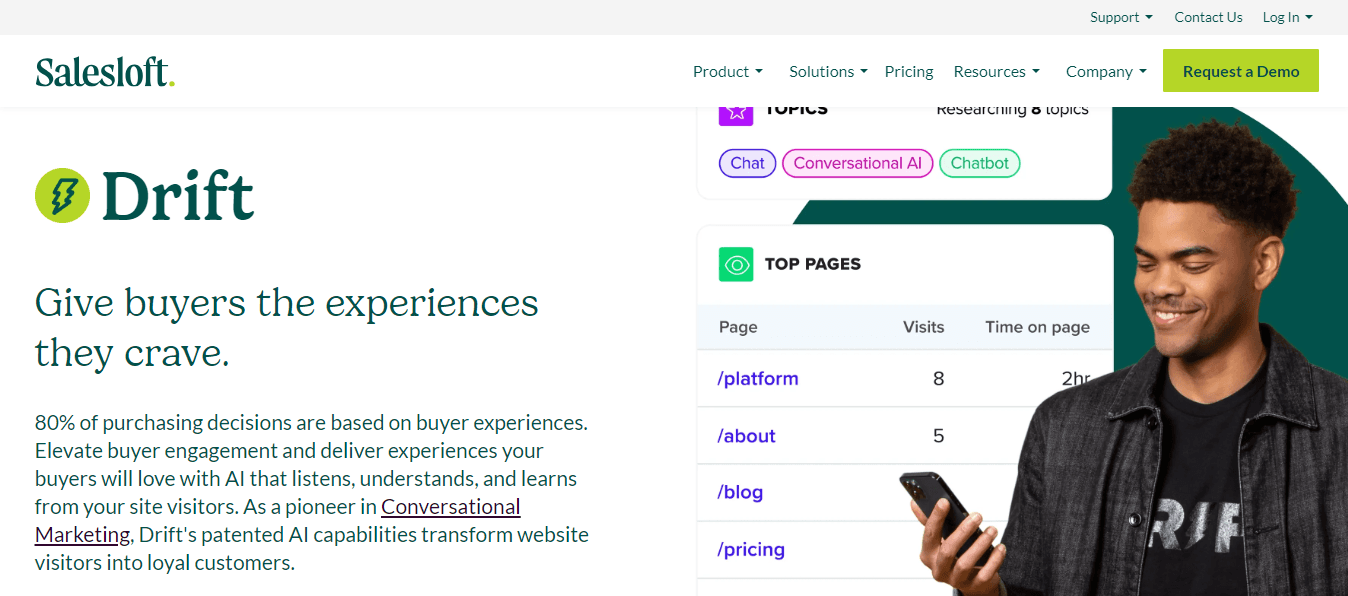
Drift uses conversational marketing to streamline sales and marketing processes and turn website visitors into leads. It is an automated lead generation tool that uses bots to help you engage with potential customers in real time. With Drift, you can add a live chat widget on your website and weaponize the power of messaging. Bots start conversations with your website visitors and collect information about them on autopilot.
Key features:
Chatbots for automated conversations
Playbooks and chatbot templates
Lead routing and qualification
Drift's chatbots help online companies engage with website visitors in a personalized way, 24/7. They can:
Qualify leads
Route them to the right sales team member
Schedule meetings with prospects
Pros:
Advanced and highly customizable chatbot functionality
Integrations with other sales and marketing tools
Real-time alerts and notifications
Cons:
Pricing can be expensive for small businesses
Pricing:
The Free plan includes basic live chat and Drift meetings.
The paid plans with custom chatbots start at $2,500/month.
13. Intercom: The Customer Messaging Platform
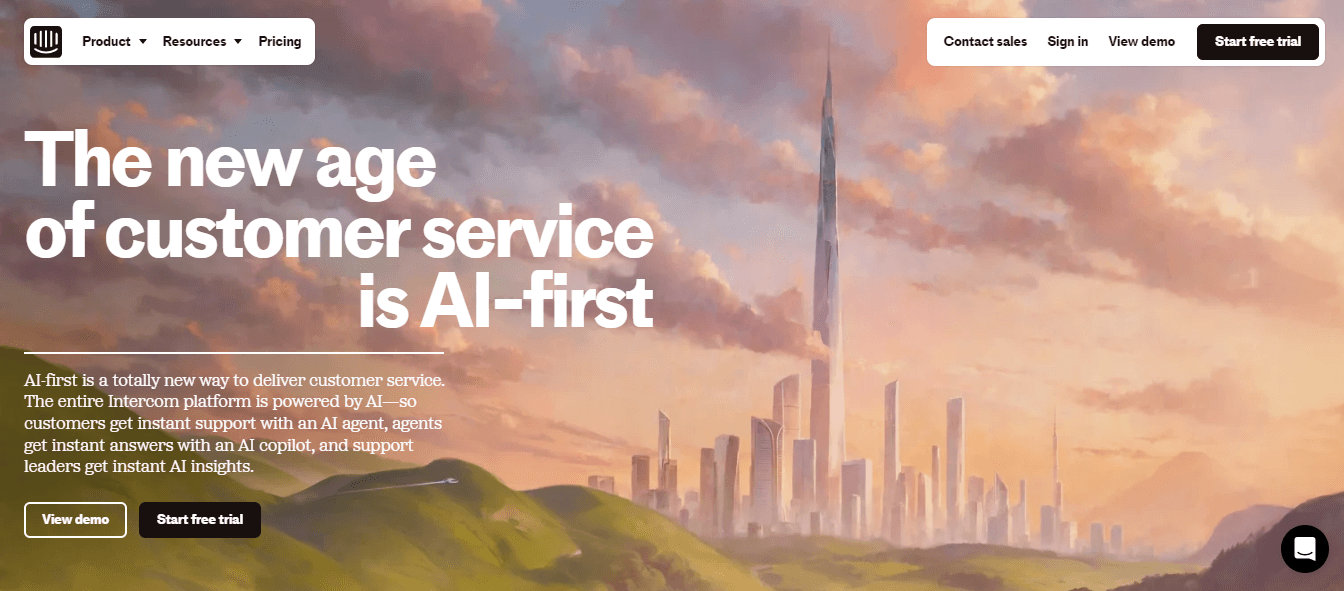
Intercom is a customer messaging platform that lets you communicate with customers across different channels, including website chat and social media. The tool has many additional modules and extensions. Its chatbot feature helps automate lead generation and customer support processes. Intercom offers a suite of messaging tools that help build connections with customers in real time and provide personalized support.
Key features:
Automated chatbots for lead generation and customer support
Message tagging and filtering for better organization
Integrations with other sales and marketing tools
Intercom is an excellent choice for businesses that need personalized messaging and advanced reporting to track engagement and conversions. The pricing plans may seem expensive for small businesses, but the features and capabilities are invaluable for larger enterprises with complex automation and customer support needs.
Pros:
Multiple modules and apps for additional functionalities
Powerful messaging and conversational marketing features for lead generation
Advanced analytics
Cons:
Pricing may be prohibitive for small businesses
Limited social media integration
Pricing:
Intercom offers a 14-day free trial.
Its most affordable paid option (the Starter plan) costs $74/month with limited functionality.
14. Moosend, The Budget-Friendly Email Marketing Tool
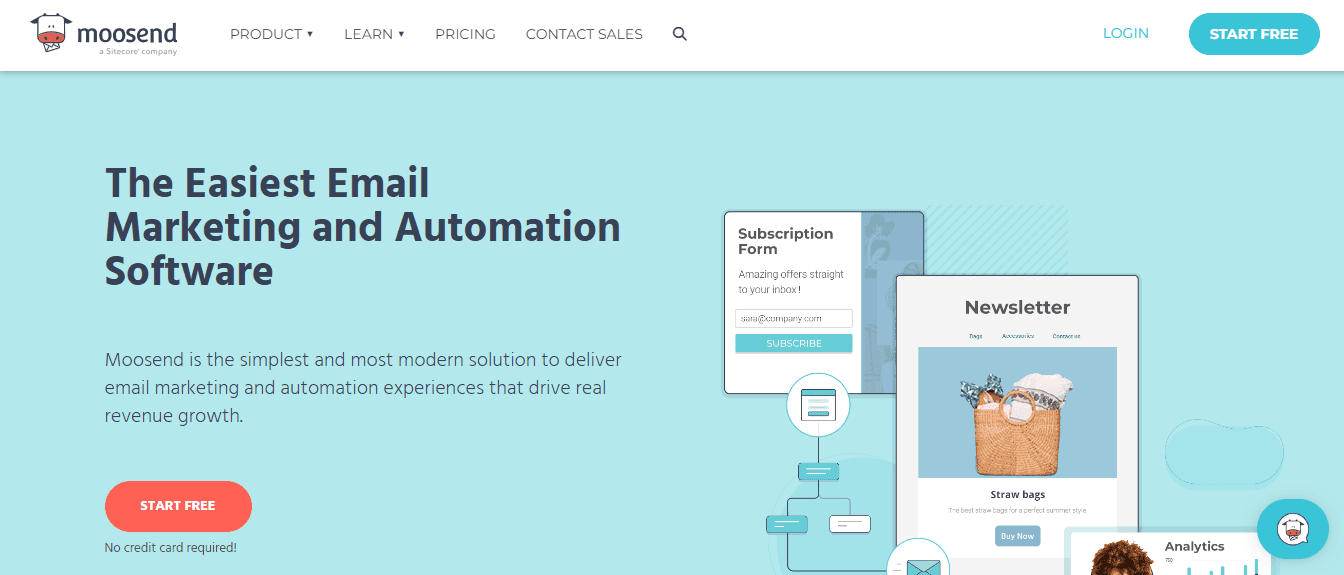
Moosend is an email automation tool that helps you create and send personalized newsletters to your leads. It’s most suitable for small businesses specializing in e-commerce. This automation tool can also be used for B2B email campaigns.
A Powerful Marketing Automation Tool with AI
Features One of the best things about Moosend is that you can create newsletters or pop-up banners with a simple drag-and-drop. They leverage AI to analyze the data from your website, such as your subscriber behavior. This way, you can send more personalized messages or email notifications and maximize customer experience and retention. That said, similar to Skylead, you can use this marketing automation tool to create a sequence with if/else conditions such as “if the purchase was made” and so on. I can check for my subscriber’s actions and send suitable follow-up messages.
Key features:
Moosend offers a vast library of templates for creating newsletters or landing pages for email marketing campaigns. Whichever you choose, you’d be glad to hear that every template comes with device optimization functionalities.
You can group leads from your email list and send separate messages. You can also divide the leads based on keywords, such as whether they clicked on the link in the previous email.
Like OptinMonster, Moosend can help you gather new leads and increase your lead-generation efforts.
It offers customizable forms like pop-ups to promote your lead magnets, like webinars, and create email lists.
You can integrate Moosend with your CRM to streamline your related tasks, such as Hubspot or other apps.
Pricing:
Moosend has two pricing systems:
Pro: This plan is suitable for small businesses because it starts at as low as $9 per month for up to 500 subscribers. On the other hand, this plan goes as high as $5840 a month for up to 1M subscribers.
Enterprise: The second plan is for agencies, and you need to contact Moosend directly to get a custom quote.
15. Tidio, The Chatbot for Automated Lead Generation
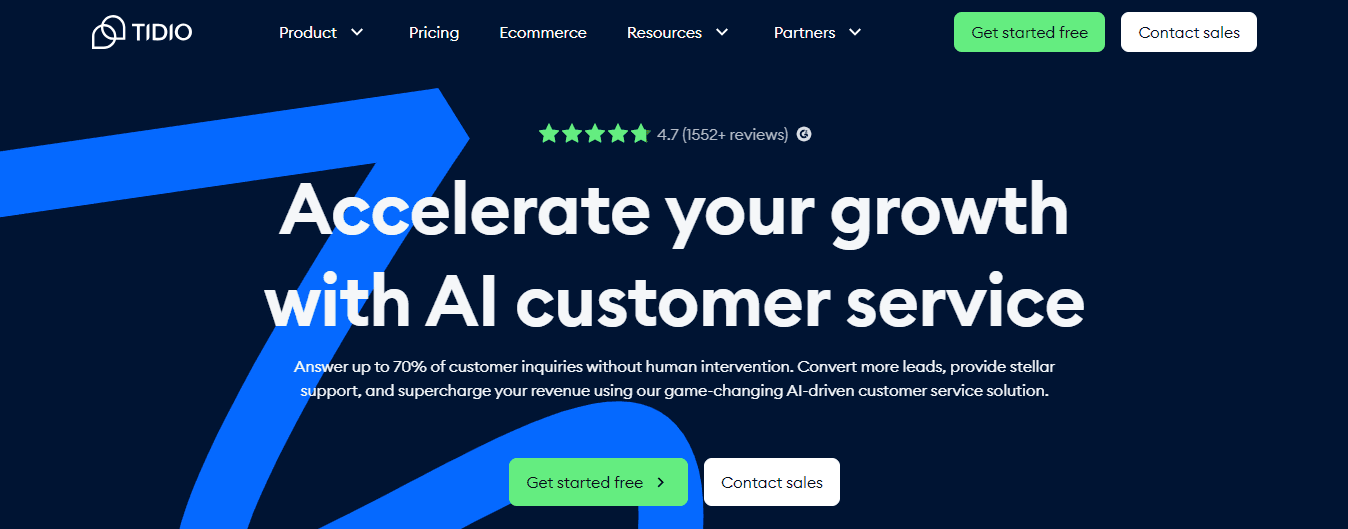
As mentioned, a live chat or chatbot is one of the best lead-capturing methods. Tidio is one of many on the market. In other words, it can automatically collect and qualify leads based on their website behavior. For example, they can visit a pricing page, and if you offer a custom quote, a chatbot can ask if a person is interested in it and leave the information.
You can set Tidio to:
Answer FAQs
Offer news
Upsell your users
This will free up time for your support team to focus on pressing problems while improving your customer experience.
Pricing:
Tidio offers several pricing plans.
Free Communicator:
$19 per user/month
Includes live chat with an unlimited number of conversations
up to 5 operators
Chatbots:
$19 per user/month
Includes from 1K to 40K triggers
Tidio+:
$329 a month
Includes both live chat and chatbot

Start Buying Domains Now and Setup Your Email Infrastructure Today
At Inframail, we are revolutionizing cold email infrastructure with unlimited inboxes at a flat rate.
We provide:
Microsoft-backed deliverability
Dedicated IP addresses
Automated technical setup
This helps customer outreach efforts efficiently like:
Agencies
Recruiters
SDRs
The main benefits of using our service:
Automated SPF, DKIM, and DMARC setup
Dedicated email servers for each user
16-hour priority support daily
Unlike traditional providers that charge per inbox and leave you wrestling with technical configurations, Inframail streamlines the entire process. We handle the complex infrastructure setup while you focus on reaching more prospects.
InfraMail provides the robust email infrastructure you need without the usual technical headaches and per-inbox costs, whether you're:
An agency looking to scale outreach
A recruiter connecting with candidates
An SDR driving sales
Start buying domains now and set up your email infrastructure today with our email infrastructure tool.

Related Reading
• Sendgrid Alternatives
• Amazon SES Alternatives
• Mailgun Alternatives
• Maildoso Alternatives
• Mailreef
• Cold Email Marketing Services
• Cold Email Services
• Lemlist vs Instantly
• Smartlead vs Instantly


